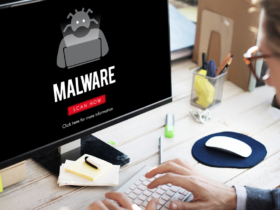Malware is a big problem. It can severely damage your computer, steal information, and even spread to other devices. If left untreated, malware can even lead to identity theft and other serious crimes. Fortunately, there are ways to remove malware from your computer. In this article, we will teach you the basics of malware removal and how to use the right tools for the job. We will also discuss some common types of malware and how to avoid them.
What is malware?
Malware is a type of malicious software that can cause damage to a computer system. Malware can be destructive, disabling essential functions of the computer, or it can simply collect data without causing any harm.
The most common form of malware is spyware, which is software that collects information about the user’s activities on the computer. Spyware can be installed by accident or by hackers who want to track the user’s online activity.
Another type of malware is ransomware, which encrypts files on the computer and then demands payment from the user in order to release them. If the user does not pay the ransom, their files will be permanently encrypted and they will not be able to access them.
How does malware work?
Malware infection can take many forms, but all share a common goal: to steal your data and spread across your computer.
Once installed, malware often looks like normal software. But it’s actually a tool used by hackers to enter your computer and carry out malicious activities.
The most common way malware gets on your computer is through an email attachment or website link. Once it’s on your computer, the malware can start downloading other programs or stealing your personal information.
To remove malware, you’ll need to identify the source of the infection and delete the files responsible. You can also use anti-malware software to help protect your computer from future infections.
What are the different types of malware?
Malware is a type of software that arrives on your computer with the intention of harming it or you. It can come in many different forms, including viruses, Trojans, spyware, and adware.
Some malware infections are minor and self-limited, while others can be more severe and require professional help to remove. Here are the most common types of malware:
Viruses: A virus is a small piece of code that attacks your computer and replicates itself by inserting into other files on your computer. They can damage your system and data, delete files, or redirect you to websites containing malicious content.
The most common types of viruses include Windows viruses (like the W32.Stuxnet worm), Mac viruses (like the OSX/Snow Leopard Flashback Trojan), and Android viruses (like the Google Play Security Virus).
To protect yourself from viruses, always install software from reputable sources, keep up to date with security updates for your operating system and applications, and use a good antivirus program.
Trojans: A Trojan is a type of malware that disguises itself as legitimate software (such as an email attachment or web page). When you open this infected file it will start executing commands on your computer in order to steal personal information or install other malicious programs onto your machine.
How malware affects your computer?
Malware can invade your computer in a number of ways, including through malicious software that is downloaded or installed without your knowledge. Once it’s installed, malware can do a number of things to your computer, including disabling security features and damaging your files.
Removing malware from your computer can be difficult, but there are several steps you can take to help protect yourself. First, make sure you have up-to-date antivirus software installed and configured to detect and remove malware. Second, always keep your computer updated with the latest security patches from vendors such as Microsoft and Apple. And finally, be careful about what information you input into online forms or download from unknown sources—malware may be lurking in these materials too.
How do you know if you have malware on your computer?
How do you know if you have malware on your computer? Malware can be hidden on your computer, so it’s difficult to know for sure. To determine if you have malware on your computer, follow these steps:
- Scan your computer with an antivirus program. This will help detect any malicious software.
- Check for suspicious files and web links. Be sure to scan all types of files and folders, including system files and the documents and photos on your computer.
- Look for unusual activity in your computer’s logs. If there are any strange or unexpected entries, that may be a sign that malware is active on your computer.
- Perform a system scan with HitmanPro to look for harmful files and registry keys.
How to remove malware manually?
Malware is a type of malicious software that can infect your computer. It can cause problems like slowed down computer performance or even data loss. There are several ways to remove malware manually. The most common way is to use an antivirus software. However, if you don’t have an antivirus, you can also try the following methods: -Use your computer’s built-in tools to scan for and remove malware.
Windows has built-in tools that you can use to scan for and remove malware. You can also use online tools like Malwarebytes and HitmanPro to scan for and remove malware.
- Delete infected files and folders. Make sure to delete any suspicious files or folders that you find on your computer.
- Use caution when downloading software from unknown sources. Be careful when downloading programs from unknown sources, especially if they are asking for personal information like your password or bank details.
- Set up a strong password and keep it confidential. If you suspect that someone has stolen your information, be sure to change your password immediately.
How to remove malware with a virus scanner?
If you are having trouble removing malware from your computer, it might be a good idea to use a virus scanner. Virus scanners can help identify and remove any malware infections that may be on your computer. Some of the most popular virus scanners include Microsoft Windows Defender, Symantec Norton AntiVirus, and McAfee antivirus.
How to remove malware with a anti-malware software?
There are many different types of malware, and each one requires a different approach to removal. If you’re using an anti-malware software, it should guide you through the process of removing the malware.
Common anti-malware programs include HitmanPro, Malwarebytes, and Windows Defender. Each program has its own specific removal procedure for different types of malware.
To remove malware with HitmanPro:
- Open HitmanPro and click on the “Start” button.
- In the launch window, click on the “Scan” tab and select your operating system from the list on the left.
- Click on the “Next” button to start scanning your computer for malware.
- When HitmanPro finishes scanning, it will show you a list of detected threats. Make sure to click on the “Next” button to remove each threat from your computer!
Advanced removal of malware: how to get rid of spyware, adware, and ransomware
Spyware, adware, and ransomware are all types of malware that can be difficult to remove. Spyware is software that tracks your online activity and sends that information back to the person or company who created it. Adware is software that displays ads on websites you visit. Ransomware locks your computer screen and demands a payment to release it.
To remove spyware, adware, and ransomware:
- Start by trying a system restore if you have recent backup files. If the problem is caused by something on your computer, restoring your system to an earlier point may help fix it.
- Remove any malicious programs from your computer using antivirus software or a scanner. Be sure to check for updates as needed so that the program can properly detect and remove malware.
- Disable any unnecessary services on your computer if they’re not being used. This includes services like Google Chrome’s “sync” feature and Windows Update service, both of which are prone to being used by malware authors to distribute their programs without being detected.
- Delete any suspicious files from your hard drive using a file manager or virus removal tool such as Malwarebytes Anti-Malware or Avast Free Antivirus. Be sure to scan all removable media (such as USB drives) for malware before plugging them in to your computer.
Conclusion
Malware can be a frustrating problem to overcome, but with the right tools and practices you can remove it quickly and effectively. By following our guidelines, you will be able to prevent future infections from happening and keep your computer safe and running smoothly. Thanks for reading!











FIND US ON SOCIALS